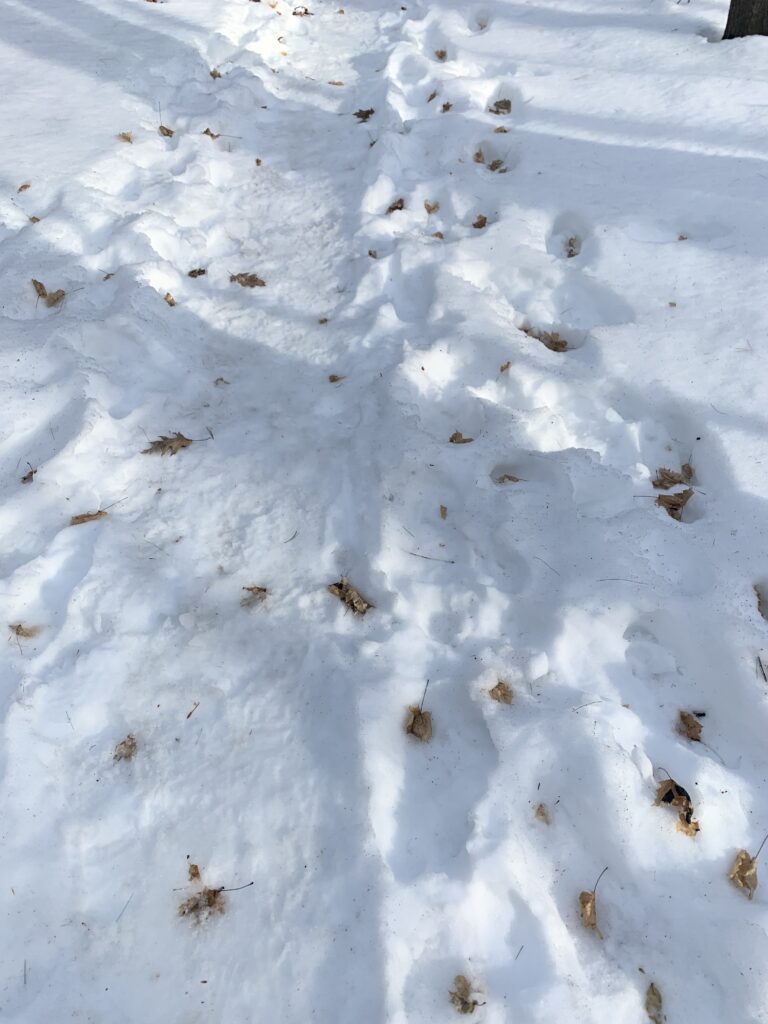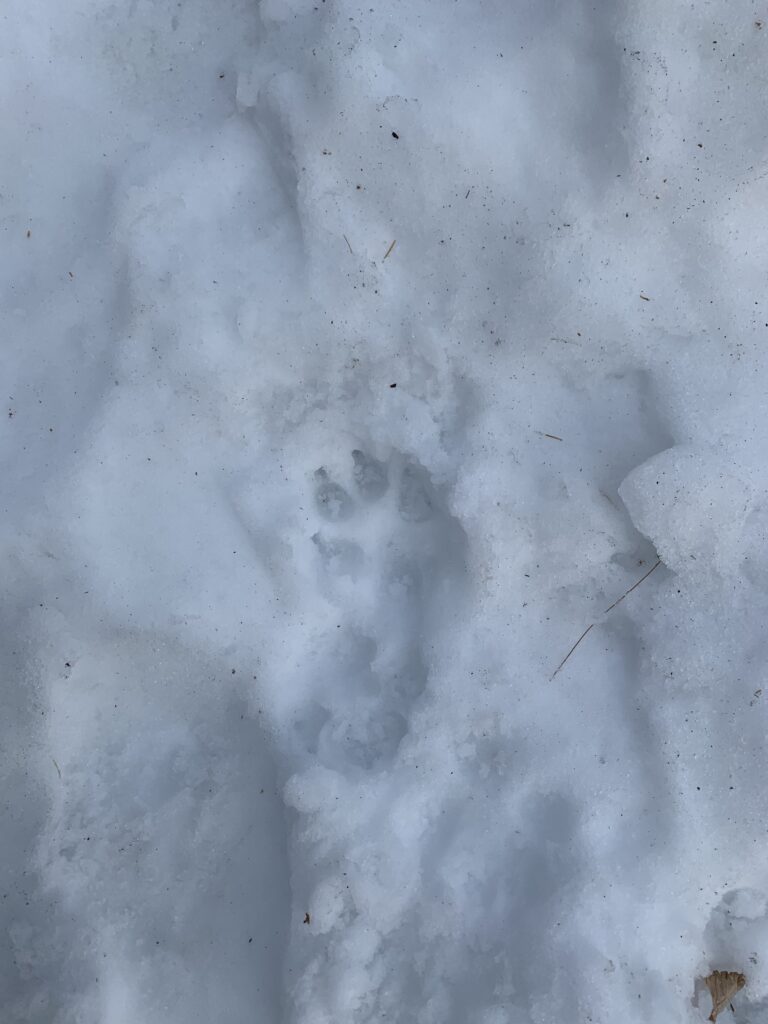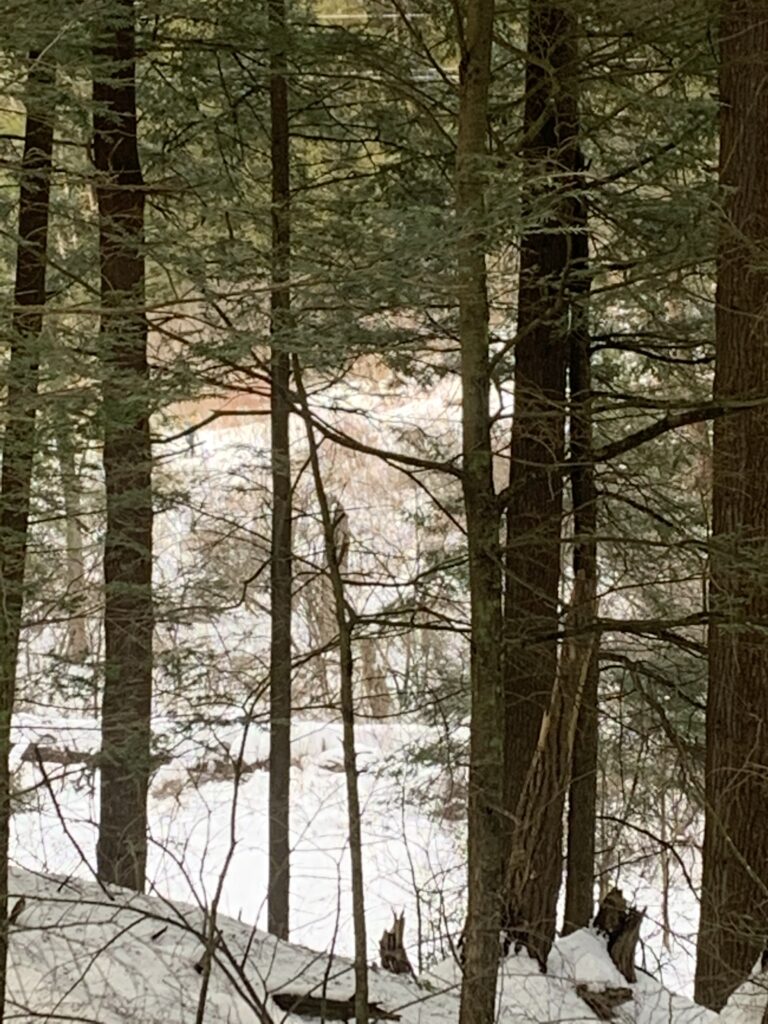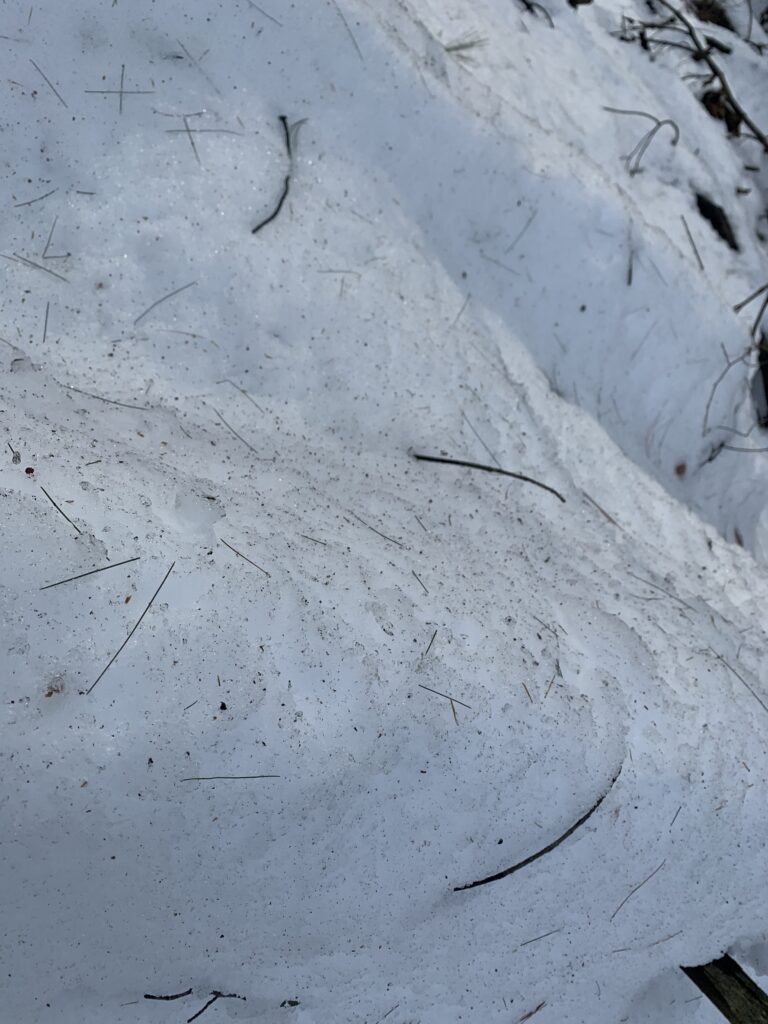As I was walking to my spot I was extra conscious of the fact that I needed to look for any sign that a creature had recently been in the area. While walking the first thing that caught my eye was not an animal’s track but the yellow leaves that were showing through the slightly melted snow. It made me remember the view of my sight in late October with all the leaves on the ground, beautiful shades of yellow, orange and red. As I kept looking down I soon found tracks of what immediately registered a some sort of dog print. The paw prints were small enough to belong to a domesticated dog. I can assume that the domesticated dog lives inside during the winter alongside its owners but it could assume remain outside in the winter months. Another common indicator of a dog’s presence is a patch of yellow snow but I did not see any patches near my spot in Centennial. Domesticated dogs often consume a “balanced” meal of delicious dog food and are rewarded with treats occasionally. In Burlington domesticated dogs have no predator or prey. The paw prints continued through the path past my sport for quite some time. As I began to walk further past my spot I was looking at the stream and I saw something out of the corner of my eye. I took out my phone to take a picture of the mysterious creature and after I zoomed in, I realized it was a dog. I choose to believe that the dog I spotted was possibly the owner of the tracks I found because of how recently the tracks appeared. I enjoyed walking to my spot because it was such a nice walk. It felt refreshing to be able to fully enjoy the weather because it had been so cold. It seemed almost unnatural that it was so warm, 35 degrees for February. I spent some time reflecting on the changing environment around me and tried to imagine what it will feel like in my spot years from now.




